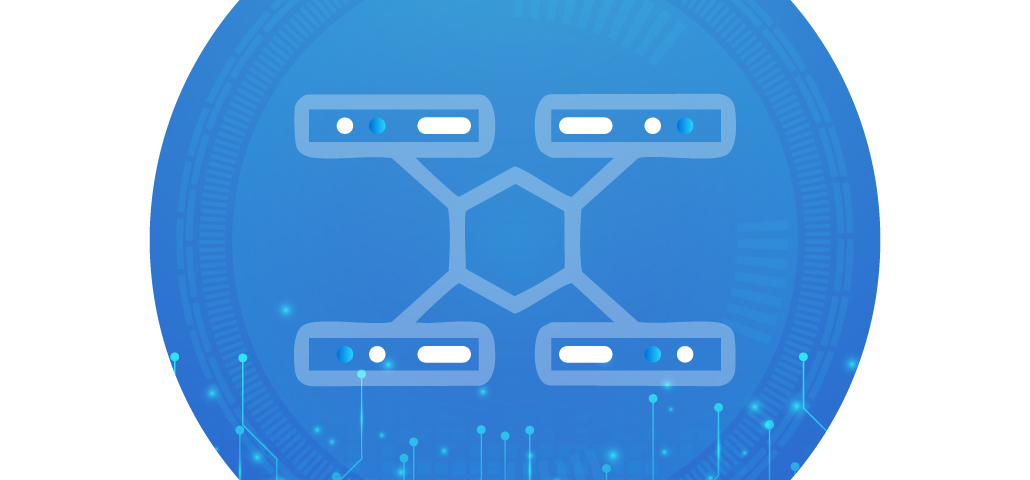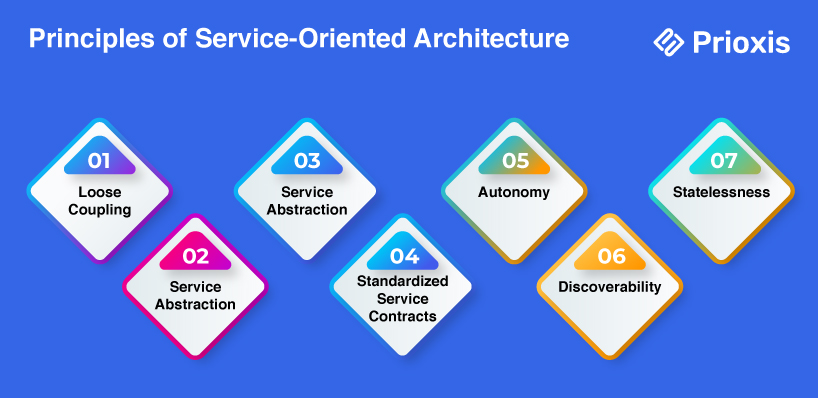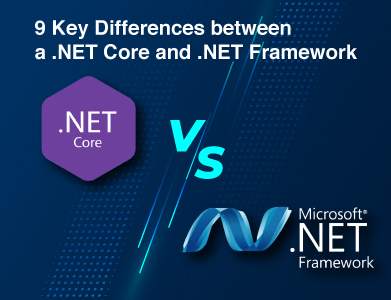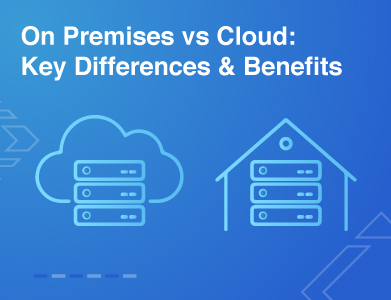Expertise
It’s common for businesses to end up with a growing mix of software tools—some custom-built, others purchased off the shelf, and many scattered across cloud and on-premise environments. Over time, making all of them talk to each other reliably becomes less of a technical challenge and more of a strategic bottleneck.
This is exactly the kind of problem Service-Oriented Architecture (SOA) was built to solve.
Instead of creating one giant system where everything is tightly connected, SOA breaks down software into smaller, modular pieces called services. These services are designed to perform specific functions and communicate over a network using standard interfaces. This approach not only simplifies integration, but also allows systems to evolve, scale, and adapt without needing to be rebuilt from scratch.
Let’s take a closer look at how SOA works, why it still matters, and how it supports the kind of flexibility today’s systems demand.
What is Service-Oriented Architecture?
Service-Oriented Architecture is a software design model that organizes applications as a set of reusable services. Each service is self-contained and focused on a specific business task. That task could be as simple as validating a customer ID or as complex as handling order processing with payment and shipment tracking.
These services interact over a network, typically using APIs, and follow clearly defined communication rules. This allows them to work together to support larger applications, even if they were developed separately, use different technologies, or run in different environments.
In practical terms, SOA helps businesses stitch together various systems—old and new—into something that behaves as a single, unified platform. Services are deployed independently, can be updated on their own schedules, and are designed to be reused wherever needed.
Principles of Service-Oriented Architecture
The strength of SOA Software Architecture lies in a few core design principles. These are not just high-level ideas—they shape how systems are designed, built, and maintained on a day-to-day basis.
1. Loose Coupling
Loose coupling means that services are not tightly bound to each other’s internal structures or processes. A service can change its internal logic or switch data stores without affecting its consumers, as long as it maintains its external interface.
This is especially important in large systems, where changing one component shouldn’t require changes in ten others. Loose coupling also enables fault isolation. If one service fails, others can continue to operate independently.
2. Service Abstraction
Each service hides its internal implementation from the outside world. Consumers interact with the service through its interface only. This encapsulation improves security, reduces complexity for other teams, and allows the service provider to make changes or optimizations behind the scenes.
Abstraction also supports longevity. As business logic evolves, the service can change internally without breaking consumers—unless a breaking change is explicitly introduced in a new version.
3. Service Reusability
Services are designed to be reused in multiple contexts. This requires careful design up front to avoid hardcoded dependencies or assumptions that limit flexibility.
For example, a shipping service might initially support only domestic orders. If built properly, it can later be extended to support international shipping, while continuing to serve its original use case. This avoids building the same logic again for another application.
4. Standardized Service Contracts
A service contract defines how consumers should interact with the service—typically specifying input parameters, output format, data types, and communication protocols. These contracts are documented and often versioned.
By enforcing standards, services become predictable and testable. This also allows cross-team collaboration, as different developers or teams can work on separate services without needing to understand the internals of what each one does.
5. Autonomy
Services manage their own logic and data. They operate independently and do not rely on shared databases or common logic layers. This isolation allows services to be deployed, updated, and scaled without coordination across the whole system.
Autonomous services can also be hosted in different environments (e.g., cloud, on-premises) and managed on separate schedules.
6. Discoverability
Services should be easily found and understood by other systems. This is often achieved through service registries, which act as directories listing available services, along with metadata about how to use them.
A discoverable service makes reuse more likely. Teams are more inclined to use a service if they can quickly understand what it does and how to interact with it.
7. Statelessness
Whenever possible, services should avoid maintaining session state between requests. Stateless services are more scalable and resilient because they can be distributed across multiple nodes without needing to share state. If a state is needed, it should be managed in a dedicated data store or cache.
Benefits of SOA Architecture
The advantages of Service-Oriented Architecture are both technical and operational. When implemented properly, SOA can fundamentally change how systems are built, scaled, and maintained.

1. Scalability and Load Distribution
Because each service is independently deployable, resources can be allocated based on actual usage. A frequently used service (e.g., a product catalog service during holiday sales) can be scaled horizontally across multiple servers, while less-used services run on minimal resources.
This makes infrastructure more efficient and cost-effective, especially in cloud environments where pricing is tied to compute and usage.
2. Faster Development Through Reuse
SOA enables development teams to reuse services across multiple applications. Instead of rebuilding core features (authentication, billing, inventory management), teams can integrate existing services and focus their time on new functionality.
Over time, this builds a library of tested, stable components that accelerates development and reduces error rates.
3. Improved Integration Across Systems
Organizations often operate a mix of systems—legacy ERPs, modern cloud platforms, third-party APIs, internal custom tools. SOA provides a structured way to link these systems using standardized service interfaces.
A service can expose legacy system functions in a modern format, allowing older platforms to participate in new workflows without major rewrites.
4. Reduced Risk in Change Management
Since services are isolated, changes to one do not cascade across the entire system. This enables continuous delivery and faster iterations. New features or fixes can be deployed to one service, tested in production, and rolled back if needed—all without disrupting the rest of the application.
This modularity supports better risk management, especially in complex, regulated, or high-availability environments.
5. Clear Alignment with Business Capabilities
Well-designed services map closely to business functions. This improves communication between technical and non-technical teams, as services can be discussed in terms of the outcomes they provide, rather than technical implementation.
It also makes it easier to audit system behavior, trace errors, and assign ownership to specific parts of the system.
6. Support for Multi-Channel Delivery
As organizations roll out web apps, mobile platforms, partner portals, and IoT integrations, they need consistent functionality across all channels. SOA allows the same core services (e.g., order tracking or pricing) to be reused in multiple front ends, ensuring consistency and reducing duplicate effort.
Learn More: Differences between SOA and Microservices.
How Does SOA Work?
While SOA is a design model, not a product, it typically includes several common architectural components and operational patterns.
1. Service Interface Definition
Every service defines a public interface. This describes:
- What inputs the service accepts
- What outputs it returns
- What errors it may throw
- How to access it (e.g., endpoint URLs or message queues)
For example, a product lookup service might define an endpoint like GET /products/{id}, returning JSON data with product details. This interface is documented (often using OpenAPI or WSDL) and versioned.
2. Service Implementation
Behind the interface is the logic that carries out the task. This can include data access, validation, transformation, and calls to other services. The service is implemented using the most appropriate language or framework and packaged for deployment.
The implementation layer is invisible to consumers, as long as it adheres to the published interface.
3. Service Hosting and Communication
Services are deployed independently and made available over a network. They may run on virtual machines, containers, or serverless architecture platforms. Communication between services often happens using HTTP/HTTPS with REST, though some systems use SOAP or asynchronous messaging with AMQP or Kafka.
Each service listens for incoming requests, processes them, and sends back a response. Authentication, encryption, and throttling policies are often applied at the network layer or through API gateways.
4. Service Orchestration and Composition
Simple services can be combined to support more complex processes. For example, placing an order might involve:
- Validating the customer profile
- Checking inventory
- Creating a shipment request
- Charging a credit card
Orchestration can be handled by a workflow engine, a business process management tool, or custom logic in another service. This allows teams to build rich workflows by combining simple, reusable parts.
5. Service Registry and Discovery
A registry allows services to publish their metadata about what they do, where they are hosted, and how to access them. Other systems can query the registry to find available services at runtime or during deployment.
This makes large-scale environments more maintainable and reduces hardcoded dependencies between services.
6. Monitoring, Logging, and Governance
SOA systems must be observable. Each service should emit logs, metrics, and traces. Centralized logging platforms, APM tools, and health dashboards provide visibility into system behavior and performance.
Governance frameworks define who can access each service, under what conditions, and how changes are tracked. This is essential in regulated industries or when managing third-party integrations.
Implementation in Practice
Many enterprise environments already follow some form of SOA, whether formally defined or not. Common use cases include:
- Exposing functionality from legacy systems through a service layer
- Creating shared services for authentication, billing, or user management
- Linking cloud and on-premises platforms through API gateways and service registries
In regulated industries, service-based architecture supports traceability, access control, and auditing. In high-volume environments, it helps systems scale predictably by distributing the load across multiple services.
Conclusion
Service-Oriented Architecture (SOA) remains one of the most effective ways to design modular, scalable, and future-ready software systems.
Built on principles of reusability, stability, and seamless integration, SOA enables organizations to manage complexity while adapting quickly to evolving business needs.
As technology stacks evolve, service-based architecture continues to provide a grounded and reliable model for long-term growth—supporting everything from hybrid environments and legacy app modernization to API-driven ecosystems.
By leveraging independent services, teams can eliminate redundancy, improve efficiency, and accelerate both development and innovation. For those shaping enterprise architecture, SOA still offers a strategic edge that’s hard to ignore.












